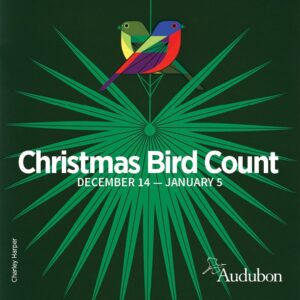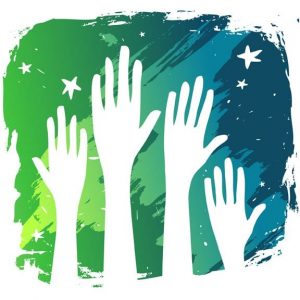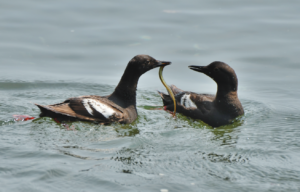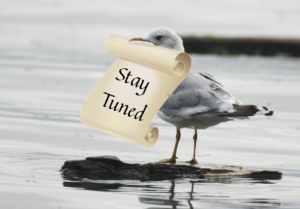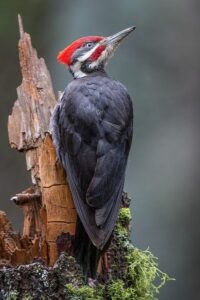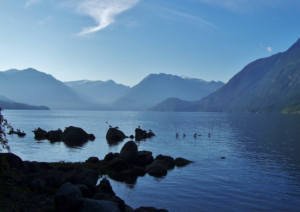Whittier Johnson – September 16, 2020 – 10:45 A.M.
Map: Bottle Beach State Park; Google Map; eBird: Bottle Beach State Park; Tide Table: Grays Harbor Westport
Known as a top shorebird viewing spot, Bottle Beach offers even more. Don’t ignore the grassy areas and hedge rows where you may find an array of passerines depending on the season. Grays Harbor’s South Bay holds huge winter flocks of ducks. The beach offers an ever-changing mix of birds refueling, resting, etc. Sometimes there are more shorebirds on the beach than one can count, or as with a recent visit, very few. I speculate smoke from forest fires had something to do with the relative absence of shorebirds that day. From time to time birders are treated to falcons chasing shorebirds here.
How to get there: It is a one-hour drive to Ocosta from the Mud Bay Park and Ride Lot in West Olympia. Google Maps lays out the route. Head west on Highway 8 which becomes Highway 12 at Elma and continue into Aberdeen. Hint: Use the left lane in Aberdeen. After crossing the Wishkah River bridge, it is three blocks to the left turn onto South H Street taking you south over the Chehalis River. After the Chehalis River bridge continue straight past Grays Harbor College approximately 15 miles to Ocosta. Look for the Bottle Beach State Park sign on your right.
Parking and facilities: Use of the parking facility requires a Discover Pass.
The short trail to the beach is level and mostly blacktop. A connecting short unpaved trail allows viewing of the nearby grass and brushy area. The beach is sandy, muddy, soft and gooey in spots. The trail can be accessed by wheelchairs but the beach has no accommodation for them. There is a pit toilet in the parking lot.
When to go: Check tide tables for Grays Harbor Westport (Point Chehalis). Time your arrival so you are at Bottle Beach two or two and a half hours before high tide. The incoming tide will bring shorebirds closer and closer as it comes across the mud/sand flats, which happens quickly. Look down at the incoming water often while using your binoculars and scope.
What to wear:
- Waterproof rubber boots (barn boots, etc.) will allow you to walk out onto the mud/sand flats and meet the incoming tide. Standing motionless in half an inch of saltwater for a few minutes will often result being surrounded by feeding shorebirds.
- Winter weather clothing will be more and more important as the season moves from fall toward winter.
- Take binoculars and if you have one, a spotting scope.
September 16 – 10:45 a.m. – heavy smoke and fog – Bird List
Greater White-fronted Goose, Northern Shoveler, Mallard, American Widgeon, Northern Pintail, Black-bellied Plover, Least Sandpiper, Ring-billed Gull, Western Gull, California Gull, Caspian Tern, Great Blue Heron, Ruby-crowned Kinglet, Bewick’s Wren, Cedar Waxwing, American Pipit, House Finch, White-crowned Sparrow, Savannah Sparrow, Song Sparrow, Lincoln’s Sparrow, Red-winged Blackbird, Common Yellowthroat, (and an unidentified warbler that escaped into the bushes – the one that got away!) Migration, weather and other factors change what birds and how many show up at Bottle Beach.
BEFORE YOU GO:
Before heading off for a birding adventure, here are some things to consider –
1. It’s always best to have a partner with you – both to maximize the joy and to minimize the risks. BHAS cannot ensure that these locations are totally safe.
2. Don’t forget to bring your mask and hand sanitizer. Have your mask handy and put it on when passing another person not in your party.
3. Leave valuables at home.
4. Check the weather and the bird reports before heading out. An easy way to check what birds have been seen is through Birder’s Dashboard http://birdingwashington.info/dashboard/. It is a simple way to research a species, place, or checklist.


